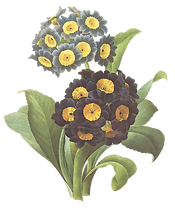I wish we could stay here forever... and ever... and ever
- We'll Drink To That
- Nov 20, 2022
- 4 min read

When I was a child growing up in the 70’s and 80’s, my parents loved to go for long drives, just for fun. I used to daydream as I looked out of the backseat window and gaze at the houses we passed, imagining what went on inside. And it wasn’t always pleasant. I would make up little horror stories about them. I could imagine each scene in vivid color. This one looks like people have been walled up inside. That one looks like there are bodies in the basement. I wonder if anyone has died in that one? That one looks like it cries when people leave. Of course, not all houses spoke to me like that. But it happened often enough that I began to understand the importance of place in storytelling. As author Alice Munro once said, “Something had happened here. In your life there are a few places, or maybe only one place, where something has happened. And then there are the other places, which are just other places.” I gravitated toward movies where the houses, homes and buildings had just as strong of a screen presence as the human actors.
Some houses can have personalities, or “character.” They can emanate feelings of comfort, warmth, and love. Of course, these are no doubt tied to one’s experiences, but often it is merely the sight of a place that evokes such a strong emotional reaction. It is almost like they’re alive. Mark Twain, when speaking of his home, once said “To us, our house was not unsentient matter -- it had a heart, and a soul, and eyes to see us with; and approvals and solicitudes and deep sympathies; it was of us, and we were in its confidence, and lived in its grace and in the peace of its benediction.”
And some were not so benevolent. Which is exactly what drew me to Stanley Kubrick's 1980 horror film “The Shining.” Adapted from Stephen King’s 1977 novel, “The Shining” tells the story of Jack Torrance, a former teacher, who takes the job of caretaker for the Overlook Hotel for the winter. Bringing along his wife Wendy and their young son Danny, Jack hopes to work on his writing. Set in the Rocky Mountains, the Overlook is a massive, imposing edifice. The opening scene is an aerial shot that follows the long, winding road leading to the hotel, while the ominous and disturbing tones of Wendy Carlos and Rachel Elkind’s interpretation of “Dies Irae” play. You cannot help but feel a powerful sense of foreboding, of evil. While the hotel is immense, the Torrances will practically be alone in its embrace.

"Some places are like people: some shine and some don't." - Dick Hallorann.
Within the walls and halls of the oppressive hotel, “something” did happen there, and glimpses, remnants, and residues of it remain - some of which are seen by Danny, a boy with supernatural sensitivities. Normal family scenes, like Wendy opening up a can of fruit cocktail to serve with dinner, seem comforting and familiar at first, but then become strangely disturbing when you see that the can is giant and Wendy is in an industrial hotel kitchen. The little family seems so small, and powerless when compared to the vast presence of the hotel. We watch as Jack descends into madness and know that the horror is more than just ghosts in an empty hotel.

"Wendy? Darling? Light of my life. I'm not gonna hurt ya. You didn't let me finish my sentence. I said I'm not gonna hurt ya. I'm just going to bash your brains in." - Jack Torrance.
Disturbing scenes of former inhabitants will forever be branded in my memories, along with the upsetting, queasy feeling of knowing something is wrong. Really wrong. Jack's descent into madness only added to my fear of being alone in a place where something did happen, a fear that dates back to my childhood days of making up stories about houses. That feeling of fear is what brings me back to this movie again and again and again, and is the inspiration for our cocktail Cabin Fever.

In the film we watch Jack sitting at the bar in the beautiful old hotel ballroom being served a glass of whiskey. We see the iconic Jack Daniels bottle and so we chose Jack as our base spirit. To this we added the flavor of pear liqueur, and the syrup from a giant can of fruit cocktail, along with several dashes of ginger bitters. We think you will falI in love with it right away, the same way Jack fell in love with the Overlook.
Cabin Fever
Ingredients:

2 oz Jack Daniels
.5 oz pear liqueur
.5 oz fruit cocktail syrup
6 dashes ginger bitters
Canned fruit cocktail pieces for garnish
Instructions:
Pour all ingredients except the garnish into a cocktail shaker, then fill with ice.
Shake for 25 seconds, until well chilled.
Strain into a chilled cocktail glass.
Garnish with pieces of fruit cocktail on a skewer.




Comments